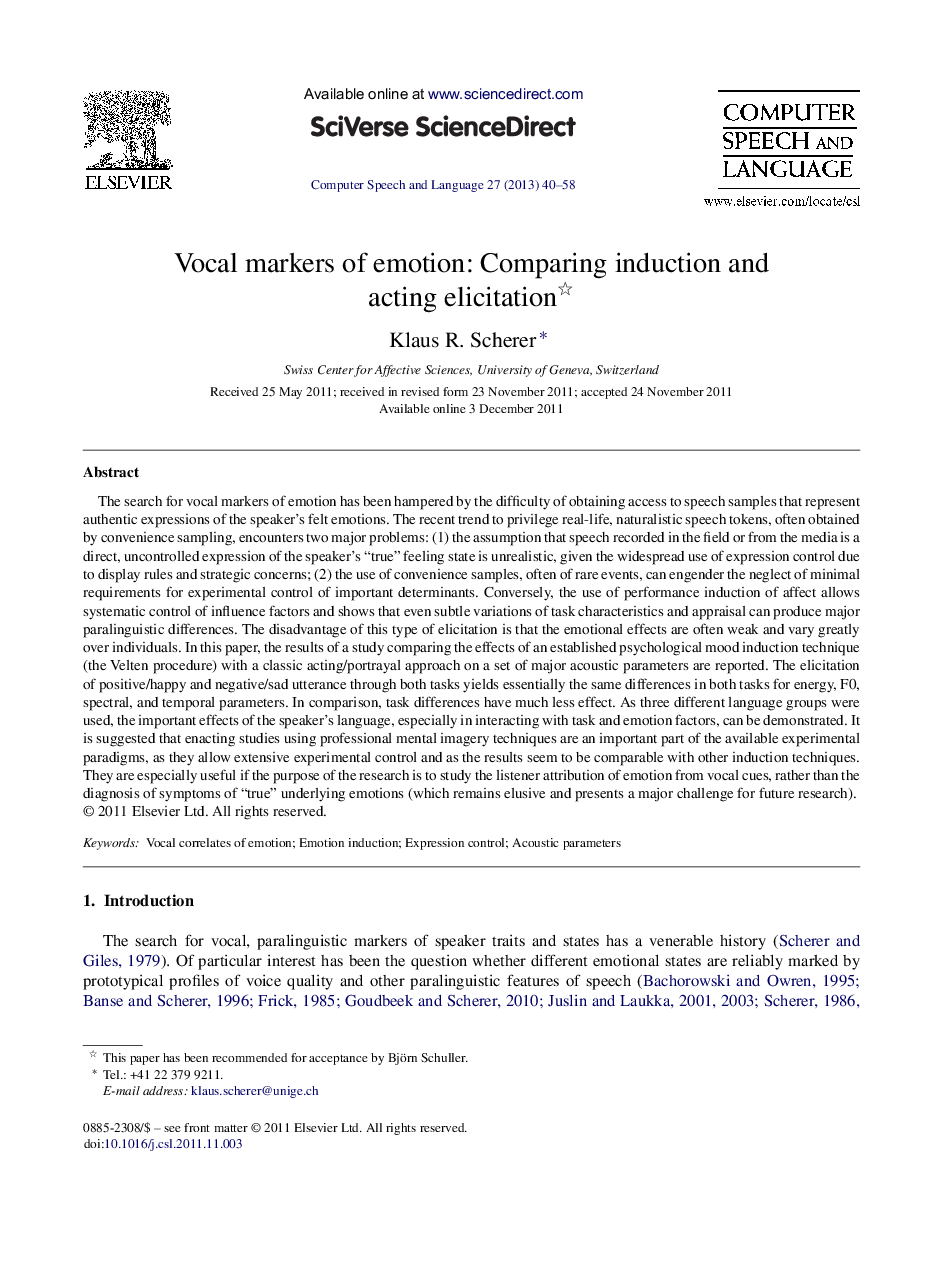| کد مقاله | کد نشریه | سال انتشار | مقاله انگلیسی | نسخه تمام متن |
|---|---|---|---|---|
| 563102 | 875471 | 2013 | 19 صفحه PDF | دانلود رایگان |

The search for vocal markers of emotion has been hampered by the difficulty of obtaining access to speech samples that represent authentic expressions of the speaker's felt emotions. The recent trend to privilege real-life, naturalistic speech tokens, often obtained by convenience sampling, encounters two major problems: (1) the assumption that speech recorded in the field or from the media is a direct, uncontrolled expression of the speaker's “true” feeling state is unrealistic, given the widespread use of expression control due to display rules and strategic concerns; (2) the use of convenience samples, often of rare events, can engender the neglect of minimal requirements for experimental control of important determinants. Conversely, the use of performance induction of affect allows systematic control of influence factors and shows that even subtle variations of task characteristics and appraisal can produce major paralinguistic differences. The disadvantage of this type of elicitation is that the emotional effects are often weak and vary greatly over individuals. In this paper, the results of a study comparing the effects of an established psychological mood induction technique (the Velten procedure) with a classic acting/portrayal approach on a set of major acoustic parameters are reported. The elicitation of positive/happy and negative/sad utterance through both tasks yields essentially the same differences in both tasks for energy, F0, spectral, and temporal parameters. In comparison, task differences have much less effect. As three different language groups were used, the important effects of the speaker's language, especially in interacting with task and emotion factors, can be demonstrated. It is suggested that enacting studies using professional mental imagery techniques are an important part of the available experimental paradigms, as they allow extensive experimental control and as the results seem to be comparable with other induction techniques. They are especially useful if the purpose of the research is to study the listener attribution of emotion from vocal cues, rather than the diagnosis of symptoms of “true” underlying emotions (which remains elusive and presents a major challenge for future research).
► Methodological difficulties in using “natural” speech to study paralinguistics.
► Minimal experimental control advocated for important influence factors.
► Diverse approaches needed to elicit emotion in symptom, attribution, symbol studies.
► Enacting methods have their place in natural paralinguistics.
► Vocal marker differences of happy/sad states similar for mood induction vs. acting.
Journal: Computer Speech & Language - Volume 27, Issue 1, January 2013, Pages 40–58